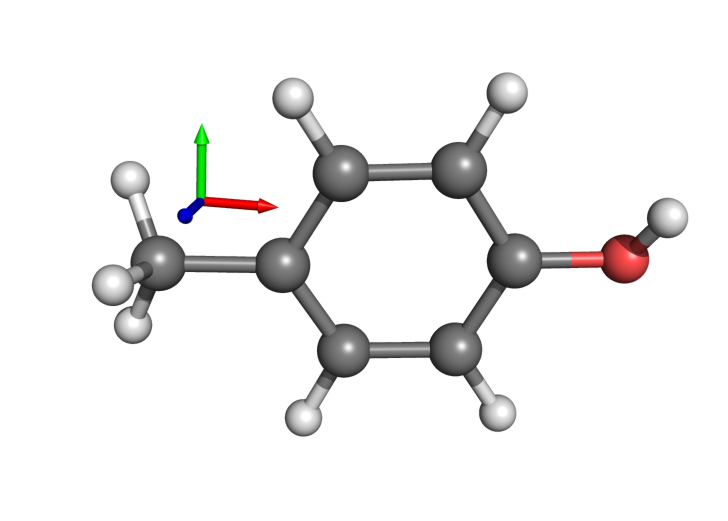This is a read-only mirror of pymolwiki.org
Axes
Jump to navigation
Jump to search
# axes.py
from pymol.cgo import *
from pymol import cmd
from pymol.vfont import plain
# create the axes object, draw axes with cylinders coloured red, green,
#blue for X, Y and Z
obj = [
CYLINDER, 0., 0., 0., 10., 0., 0., 0.2, 1.0, 1.0, 1.0, 1.0, 0.0, 0.,
CYLINDER, 0., 0., 0., 0., 10., 0., 0.2, 1.0, 1.0, 1.0, 0., 1.0, 0.,
CYLINDER, 0., 0., 0., 0., 0., 10., 0.2, 1.0, 1.0, 1.0, 0., 0.0, 1.0,
]
# add labels to axes object (requires pymol version 0.8 or greater, I
# believe
cyl_text(obj,plain,[-5.,-5.,-1],'Origin',0.20,axes=[[3,0,0],[0,3,0],[0,0,3]])
cyl_text(obj,plain,[10.,0.,0.],'X',0.20,axes=[[3,0,0],[0,3,0],[0,0,3]])
cyl_text(obj,plain,[0.,10.,0.],'Y',0.20,axes=[[3,0,0],[0,3,0],[0,0,3]])
cyl_text(obj,plain,[0.,0.,10.],'Z',0.20,axes=[[3,0,0],[0,3,0],[0,0,3]])
# then we load it into PyMOL
cmd.load_cgo(obj,'axes')
This script draws a simple cartesian coordinate system.
from pymol.cgo import *
from pymol import cmd
w = 0.06 # cylinder width
l = 0.75 # cylinder length
h = 0.25 # cone hight
d = w * 1.618 # cone base diameter
obj = [CYLINDER, 0.0, 0.0, 0.0, l, 0.0, 0.0, w, 1.0, 0.0, 0.0, 1.0, 0.0, 0.0,
CYLINDER, 0.0, 0.0, 0.0, 0.0, l, 0.0, w, 0.0, 1.0, 0.0, 0.0, 1.0, 0.0,
CYLINDER, 0.0, 0.0, 0.0, 0.0, 0.0, l, w, 0.0, 0.0, 1.0, 0.0, 0.0, 1.0,
CONE, l, 0.0, 0.0, h+l, 0.0, 0.0, d, 0.0, 1.0, 0.0, 0.0, 1.0, 0.0, 0.0, 1.0, 1.0,
CONE, 0.0, l, 0.0, 0.0, h+l, 0.0, d, 0.0, 0.0, 1.0, 0.0, 0.0, 1.0, 0.0, 1.0, 1.0,
CONE, 0.0, 0.0, l, 0.0, 0.0, h+l, d, 0.0, 0.0, 0.0, 1.0, 0.0, 0.0, 1.0, 1.0, 1.0]
cmd.load_cgo(obj, 'axes')
Save the script and run it. Tested with Pymol 1.3.
